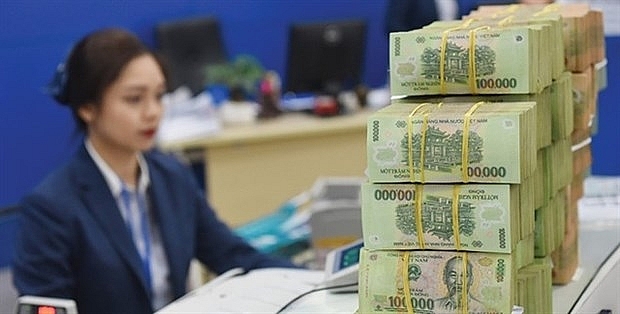New preferential lending rates assisting recovery
 |
| New preferential lending rates assisting recovery, illustration photo |
Prime Minister Nguyen Xuan Phuc last week said that the Vietnamese banking system has made significant strides to offset the adverse impacts from the coronavirus pandemic and support customers to stay afloat.
Lenders have been racing to boost lending activities, such as slashing lending rates, despite its impact on profit from their bread-and-butter lending activities. For instance, VietinBank has rolled out several preferential loan packages worth around VND60 trillion ($2.6 billion) and $600 million – including lower lending rates of 4.3 per cent annually for VND-denominated loans and 2 per cent annually for USD loans.
“VietinBank has taken timely action to ease the pain of distressed customers. Furthermore, we are seeking for cheaper financial sources, applying cutting-edge technologies, cutting lending rates, and extending payment moratoriums to assist our borrowers,” a bank representative told VIR.
Working to the same end, Trinh Bang Vu, head of Retail Business Division at South Korea’s Shinhan Bank Vietnam noted that the pandemic still exists and directly and indirectly affects the world and Vietnam.
“If banks can keep reducing lending rates at the moment, we could provide many benefits to the economy by, for example, supporting corporate clients in cutting input costs or helping to reduce the burden of consumer or housing loans on individual customers,” Vu told VIR. “All these things are certainly meaningful, providing not only financial support but also stability in the Vietnamese economy and society.”
“As of June, hundreds of our bank’s corporate and individual customers have had their debts restructured while others received a cut in lending rates without changing debt group,” Vu emphasised.
Earlier this month, BIDV has slashed annual lending rates by 0.5 per cent as the latest step in its rate-reduction trajectory (approximately 2.5-3.0 per cent lower compared to its pre-pandemic rates).
Nghiem Xuan Thanh, CEO of Vietcombank, also said, “Vietcombank came to the aid of customers experiencing difficulties through multiple support packages. Examples of these are exemptions and reductions of lending rates and fees, as well as rescheduling loans.” Experts predicted that the ratio of non-performing loans may increase by 1-2 per cent, which could lead to higher asset quality risk and higher credit costs.
On the other hand, a number of lenders cut their deposit rates as previously weaker lending demand maintained ample liquidity at banks.
Vietnam International Bank (VIB) cut deposit rates to 4 per cent per year for one- to five-month deposits. VPBank also trimmed its interest rates for saving terms of one to two months to 3.5 per cent per annum.
Viet Dragon Securities experts stated that banks now have access to capital to lend at a relatively low rate thanks to the State Bank of Vietnam’s (SBV) relief measures.
Thus, there is no rush to attract more funds from individual customers by paying higher deposit rates. Besides, COVID-19 and subsequent sharp decline in business activities have impeded demand for loans, so banks did not fall short of capital.
Meanwhile, other central banks also cut benchmark rates aggressively in a bid to boost demand for credit, thus accelerating economic recovery. A few days ago, Malaysia’s central bank trimmed its benchmark interest rate by 25 basis points to a record low as Southeast Asia’s third-largest economy struggles with the crisis.
The State Bank of India also announced a reduction in key lending rates for short-term loans in the hope of boosting credit off-take and revive demand for loans.
As of June 22, the Vietnamese banking industry has restructured repayment terms and extended moratoriums for approximately 260,000 customers with a loan balance of nearly VND180 trillion ($7.83 billion), as well as waived and reduced interest and fees for more than 421,000 customers with the loan balance of VND1.3 quadrillion ($56.5 billion). Moreover, lenders also dropped lending rates by 0.5-2.5 per cent to help troubled borrowers cope with financial hardships.
According to SBV Governor Le Minh Hung, the central bank will would increase credit growth in tandem with the balance of liquidity and favourable capital of the banking system to get the economy back on a solid footing. The SBV is also applying credit easing policy for commercial banks, especially measures to generate higher credit growth for lenders with ample financial buffers and higher customer demand for borrowing.
What the stars mean:
★ Poor ★ ★ Promising ★★★ Good ★★★★ Very good ★★★★★ Exceptional
 Tag:
Tag:
Related Contents
Latest News
More News
- Tax sector wraps up 2025 and sets priorities for next year (December 25, 2025 | 14:00)
- A tipping point for digital and hybrid wealth management in Vietnam (December 23, 2025 | 13:33)
- $250 million deal targets women-owned SMEs, sustainable agriculture (December 22, 2025 | 17:40)
- Stock market posts resilient 2025 performance (December 19, 2025 | 18:17)
- Citi Vietnam receives 2025 AmCham CSR recognition (December 19, 2025 | 16:35)
- As global green supply chain reshapes, will Vietnam be left behind? (December 19, 2025 | 08:00)
- Banks gear up for massive capital increases (December 18, 2025 | 17:04)
- Securing capital and efficiency for Vietnam’s 2026-2030 growth ambitions (December 17, 2025 | 10:00)
- Energy sector in need of blended finance mechanisms (December 17, 2025 | 09:00)
- Vietnam still has room to mobilise capital for sustainable growth (December 17, 2025 | 08:57)























 Mobile Version
Mobile Version